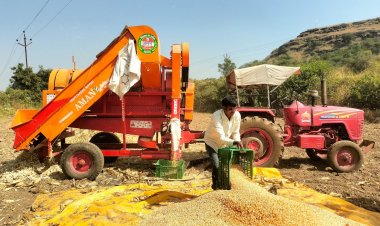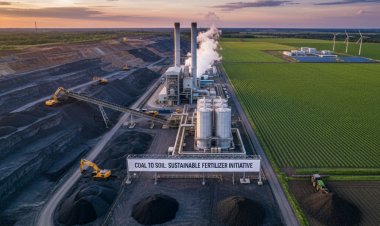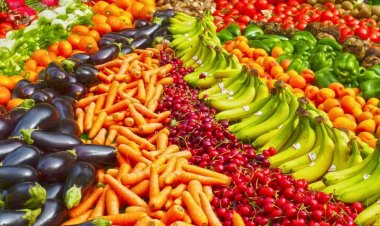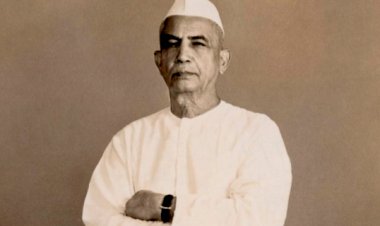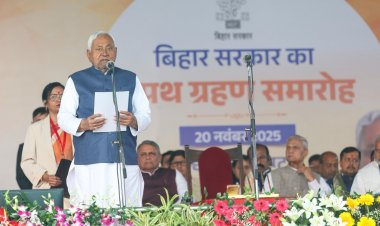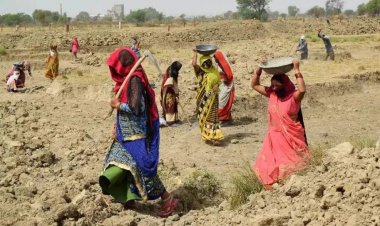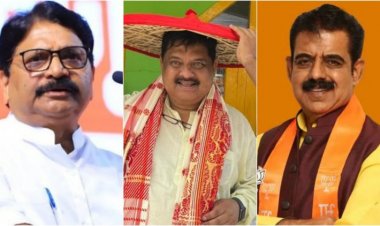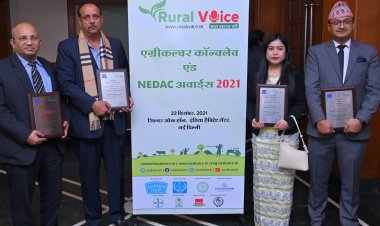Marginalized Indian rural economy: Its challenges
This marginalization of the rural economy is a result of the policymakers’ focus being on the organized part — the modern part of the economy. Modernization of the economy has been taken to be the copying of western modernity. India has not attempted its own modernity suited to the needs of the vast majority living in rural areas. No wonder the agriculture sector which provides the most important item of consumption — food — has been marginalized.
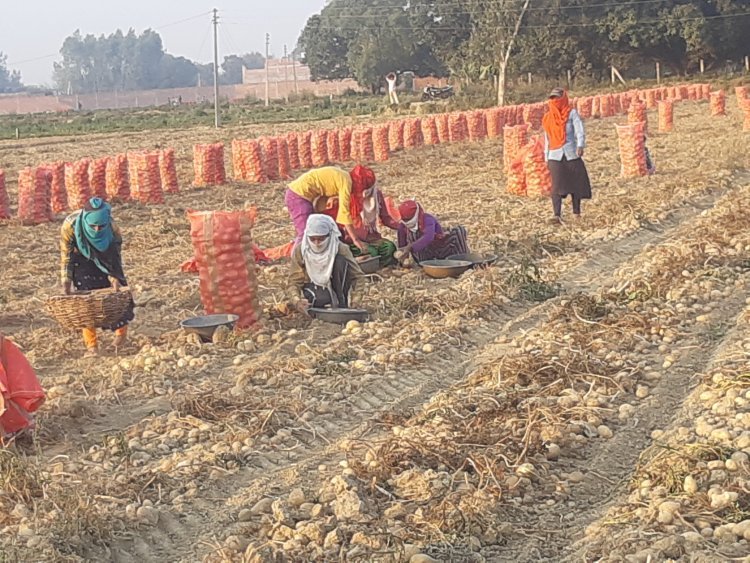
Introduction
The rural economy is complex, consisting of industry, services and agriculture. But these activities are largely in the unorganized sector with incomes lower than those in the urban areas. That is why, in spite of around 70 per cent of the nation’s population being rural, its contribution to the GDP is far smaller than that of the urban areas.
There is also greater distress due to inadequate employment opportunities even though agriculture and the unorganized sectors are supposed to be labour-intensive. Anyhow, due to the distress, there has been large-scale migration to urban areas. This is both seasonal as well as permanent. What was silently happening became evident during the lockdown when millions marched back to their villages in trying conditions. No other major world economy saw such an exodus.
Historical developments
This marginalization of the rural economy is a result of the policymakers’ focus being on the organized part — the modern part of the economy. Modernization of the economy has been taken to be the copying of western modernity. India has not attempted its own modernity suited to the needs of the vast majority living in rural areas. No wonder the agriculture sector which provides the most important item of consumption — food — has been marginalized.
Policies since Independence have been based on trickle-down. That is, the modern sector will grow and gains of development will trickle down to the marginalized sections. It was also hoped that the modern sector will grow and absorb the backward sector – the whole economy will become modernized. Unfortunately, this has not transpired since the modern sector is too capital-intensive to generate many jobs. Thus, those in the backward sector have remained stuck there. Also, most of the incomes have been earned by those in the advanced sectors, leaving little to trickle down to the rest.
Unfortunately, data for most of the unorganized sector is not independently available, so its performance is proxied by the organized sector. This gives an upward bias to the economic data since the unorganized sector is unambiguously declining while the organized sector is growing. In effect, this method for estimating India’s economic performance is faulty and needs change to figure out true economic development.
Invisibilization and colonization of the rural
The drastic impact of demonetization, GST, NBFC crisis and lockdown has badly damaged the unorganized sector and this is not captured by the official data. If it could be captured, the Indian economy’s growth would be negative today and not +7 per cent as claimed officially. So, this sector is not only marginalized in data but also in policy. If, on the basis of this faulty data, the economy seems to be robust, specific policies for overcoming the distress of the rural economy are not needed. Only palliatives are doled out but the crisis is not tackled. In brief, the rural sector is invisibilized both in data and policy.
The black economy further complicates the picture. Black incomes are earned in the organized sector since the vast majority of incomes in the unorganized sector are way below the taxable limit. But in the name of checking black-income generation in the unorganized sector, all manners of policies like digitization and formalization are being implemented that are further damaging the sector. More importantly, due to the black-income generation, the data is further vitiated so that policies are made on the basis of incorrect data. Also, black incomes are concentrated in the hands of the well-off. Consequently, the inequality between them and the poor has grown enormously and this is not captured by the data.
In effect, not only is the sector marginalized but it has been colonized by the organized sector. The latter’s growth is taking place at the expense of the former – it provides the market, much like during colonial times, India provided the market for the British industry.
The trend towards marginalization and colonization strengthened with the launch of the new economic policies (NEP) in 1991. They are even more pro-modern sector and big industry. Unlike the earlier policies, since 1947, NEP do not even pay lip service to the marginalized sections. Even for agriculture and rural areas, they propose modernization and mechanization, which cannot cater to the needs of the vast majority of the rural population.
The employment elasticity of agriculture has dropped to zero and because of the lack of adequate non-farm jobs, people are stuck there, resulting in substantial `disguised unemployment’. This aggravates poverty since the `dependency ratio’ goes up. Since Independence, the surplus from agriculture has been drained out for urbanization and industrialization via the adverse terms of trade at the farmgate level. Since these two are expensive, few resources are left for rural areas, which then suffer.
Macroeconomic impact of marginalization: Rising instability
The unorganized sector provides employment to 94 per cent of the workforce and contributes to 45 per cent of the output of the economy, with 14 per cent coming from agriculture. Its marginalization hurts the macroeconomy. It results in a shortage of demand, leading to a slowing down of the growth of the economy. Post demonetization, the rate of growth of the economy systematically fell quarter after quarter from 8 per cent to 3.1 per cent in Q4 2019-20, the quarter just before the pandemic hit India.
This should not be a surprise. If such a large part of the economy is marginalized, the purchasing power will be short and the growth of the non-rural part of the economy will also decline. If incomes rise for the poor rather than the well-off, consumption will increase. The poor have unfulfilled basic needs, so they will spend extra income to buy them – like, clothing and food. In the hands of the well-off, the extra income will be mostly saved. Unless it is invested in a new industry/business, it will not result in extra demand.
The well-off earning more have to keep investing more and more and inequality rises. If investment tapers off, demand will decline, leading to a decline in the growth of the economy. This is a recipe for growing inequality and instability in the economy.
Challenges faced by agriculture
Challenges faced by agriculture also impact the rural economy since that is its dominant component. The inadequate availability of non-farm jobs is a major issue. A large number of people are stuck in farming since they have nowhere else to go and that aggravates poverty in rural families. Farms have been increasingly fragmented and now, 85 per cent of them are of less than 5 acres. Most small farms are tiny and cannot generate adequate income for the family. Alternate work is crucial for them.
Leakage of surplus also implies that there is little left for investment and implementing technical change, which can help boost incomes. It also means that there is not enough to pay for good education for the children or provide the family access to good health facilities in times of need. Thus, the chances of improving the family’s prospects are thwarted and poverty persists. The government claims that it is providing free food to 800mn people and yet there is poverty in rural areas. So, minus the provision of free food, there would be acute poverty. Also, this means that the work available to these people does not pay them a living wage. In effect, they remain poor.
The weakness of agriculture weakness arises from the existence of a large number of farming families. They lack pricing power in the market and due to their poverty, the smaller ones are in the grip of traders and moneylenders. So, farmers get the price that prevails in the market less the margin of the traders and moneylenders. And this margin can be high.
So, farmers depend on the government announcing a floor price – minimum support price (MSP). This provides a benchmark for the farmers and the traders. Unfortunately, the mechanism to enforce it is weak. Similarly, there is no mechanism to enforce a minimum wage for farm workers. Thus, a large number of farmers and farm workers get a raw deal.
The cost of cultivation has been rising while prices have not kept pace so the incomes of farmers get squeezed. The only way they can increase their income is to squeeze the wages of the farm workers. This in turn lowers the demand for food and weakens the market price of agricultural produce.
The lack of MSP for most of the crops also has an environmental cost. Crops like paddy, wheat and sugar cane are grown in excess since they are profitable. Land is diverted from other essentials like millets, oilseeds and pulses. There is a shortage of these crops, some of which have to be imported. Further, crops not suited for a given agro-climatic zone are grown. For example, water-guzzling crops like paddy and sugar cane are grown in semi-arid areas. Thus, in every possible way, the policy (or the lack of it) creates an environmental problem.
Additionally, to get higher yields, there is heavy use of chemical fertilizers and pesticides that are destroying the soil and polluting drinking water, leading to diseases. Increasing mechanization in agriculture and automation in non-agriculture are resulting in fewer non-farm jobs.
Political challenges and reform required
In a democracy, why does the numerically large farming and rural community find itself marginalized? The reason is that agriculture has multiple economic interests. There are different categories of farmers — the rich, the middle and the marginal; and those in irrigated and unirrigated lands. Then there are the landless workers and those with small holdings who also are workers. There are competing interests and these have not been harmonized. The political parties exploit these divides. Further, the farmers who enter politics are mostly the well-off farmers who have also developed business interests and, sooner or later, start representing the interest of the urban and business elite.
The leaders of the rural areas and farmers need to sort out their differences. Their contradictions are less with each other than with the non-farm and urban interests. If they demand an MSP for all crops and that is calculated on the basis of a living wage for the farm workers, they would not lose out. They would gain because the demand for their produce would rise from workers and the price of their produce in the market would rise possibly above the MSP. So, the problem of implementing the MSP would also disappear.
This would be inflationary and there would be resistance from the middle classes and businesses who would also have to pay higher wages to their workers. But should the living standard of the middle classes and businessmen be at the expense of the workers and farmers in rural areas? That is not justice. To lower the inflationary potential of the economy, the farmers should demand lower indirect taxes and higher direct taxes and control of the black economy. They should also demand a move towards `full employment’ and living wages for workers which will end poverty. In effect, a whole package is needed for the economy. The solution to the problems of rural areas lies in the macroeconomy.
(Arun Kumar is a retired professor of Economics, JNU, and the author of Indian Economy’s Greatest Crisis: Impact of the Coronavirus and the Road Ahead published by Penguin Random House in 2020.)



 Join the RuralVoice whatsapp group
Join the RuralVoice whatsapp group

















